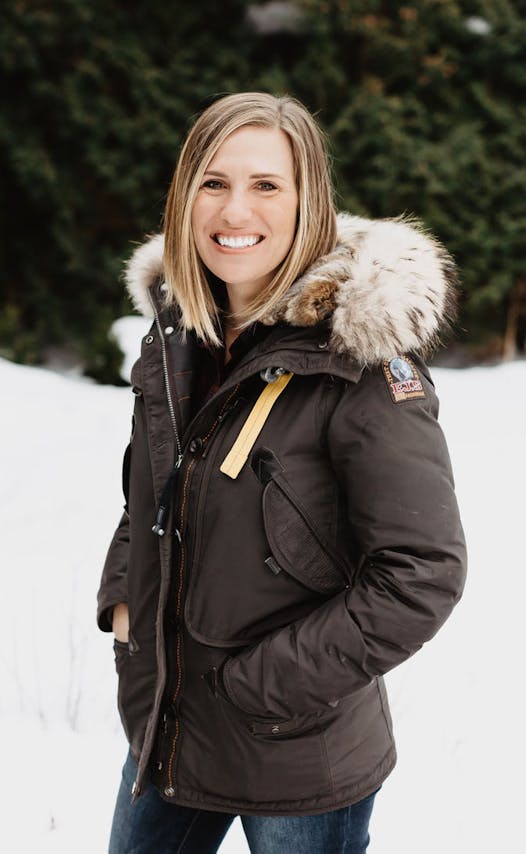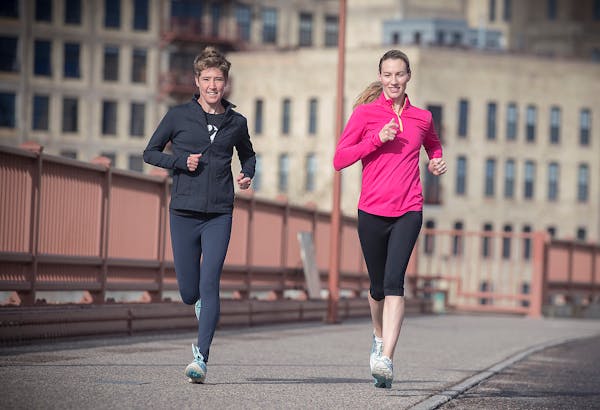Bethany Hway gazed at Lake Minnetonka through her office window in Excelsior. It was January 2018. She had been following the John Beargrease Sled Dog Marathon on the internet and caught herself missing her roots.
For Hway, now 35, mushing, training and handling sled dogs were part of family life growing up in Ely, Minn. Her father, Stan Passananti, was race marshal at the Beargrease. But she wasn't able to volunteer or even attend the event. Then, as she looked across the lake, inspiration struck.
"We can do this. That's our trail," she recalled saying to herself. "That's the best bet for bringing a race to this area."
Hway's brainstorm put a revival in-harness. After a 22-year hiatus and an even deeper sled dog history, the Klondike Dog Derby will return Feb. 8-9 to Lake Minnetonka. The 40-mile race will start and finish in downtown Excelsior, looping across the lake and passing several towns along the way.
Sally Bair, current secretary for the U.S. Federation of Sleddog Sports and Minnetonka mushing historian, said dog sled events in Excelsior began in the 1930s. They were part of the annual Klondike Day winter festivities that also featured coronation of an ice queen and a nighttime skating party. Bair said the dog derby wasn't a sport with formalized rules like it is now. Anyone could hitch up any dog to any sled, even a Flexible Flyer, and spin around the lake for a half-mile.
Bair said the golden age of mushing in Minnesota began in the 1970s with sprint racing. She would know. She was one of them for more than two decades.
"I was there, so I remembered a lot of that stuff," she said.
In 1973, the Excelsior Area Chamber of Commerce and the North Star Sled Dog Club sponsored a series of races with multiple dog-team classes, including a junior competition. The Open A Class allowed mushers to hook up an unlimited number of dogs. Sixty-eight teams showed up for a chance at a $300 purse.
On a lake the size of Minnetonka, ice roads, snowmobiles, water overflow and fish houses were obstacles to avoid. Bair told of her lead dog who inexplicably veered from the sled trail onto an ice road. Her sled's snow hook wasn't able to grab onto the glare ice to stop them, so she mustered all her power just to dodge fish houses.
Loose neighbor dogs and spectators who bring pets to the competition site were another perpetual problem. During one race, Bair encountered a man with a small dog directly in her path. She avoided the dog, but lost time in the competition.
Over the decades, races were sometimes canceled due to poor weather. But Bair also attributed gaps in the event to lack of personnel willing to undertake such an event. The last race was in 1998.
Enlisting help
Hway said before becoming president of the Klondike Derby, she wasn't fully aware of what happened behind race scenes.
"I've been on the runners. I've been a handler. And I never in my life realized how much work went into making a sled dog race happen," she said.
Hway enlisted the help of two core race founders, Bill Damberg and Jackie Piepkorn, a veterinarian. Damberg owns Brightwater Clothing & Gear in Excelsior, a retailer well-suited for winter and sled dog racing. Piepkorn has worked the legendary Iditarod sled dog race in Alaska and many others in the Lower 48. She operates Westonka Animal Hospital and was part of bringing the race to Minnetonka in the 1990s.
Their goal next month is to stage a world-class sled dog race that celebrates the authentic spirit of the North. They wanted to educate, showcase the athleticism and passion of the dogs, and pay tribute to the history of sled dog racing on Minnetonka. They grabbed friends willing to volunteer, held fundraisers and meetings year-round, and procured laundry lists of permits. They had people to win over.
Part of that meant convincing the Excelsior City Council that closing downtown's main street for two days, filling the street with snow, commandeering the municipal parking lot and loading it with dog trucks were good ideas.
Hway said a sled dog race in the Twin Cities metro area presented unique challenges because they had more expenses than races in rural areas. But the metro also provided unique opportunities. Lake Minnetonka offers one of the highest concentrations of wealth in the region. The race is literally in the backyard of large corporate sponsors who want their brands in front of high-income spectators.
"We're running by the Pillsbury Mansion and some of these massive homes. It's easier to sell sponsorships," she said.
Organizers also hoped the $25,000 purse, far larger than most for a 40-mile race, would help lure a genuinely competitive group of mushers from their snowy trails up north to the big city. The Klondike's 40-team roster filled in 11 days. Registered participants include mushers who compete in the Iditarod, train in Alaska and Canada, and win frequently in the Midwest.
Jennifer Freking, last year's runner-up in the Beargrease marathon, is on board. Her teams typically run long-distance races rather than mid-distance. But the Klondike gives her younger dogs race experience.
"There are going to be some high-test teams there. We're trained for the marathon, not necessarily for pure speed," she said. "I'll have a nice team, but I expect there will be some 12-, 13-, 14-mile-an-hour teams."
Hway said mushing was part of the fabric of her youth and a reason she undertook this extraordinary effort.
"You have this relationship with the dogs that is so cool," she said. "Watch a retriever jump off a dock and that's kind of a little sliver of what it's like for these huskies to run. … You don't have to tell them to run."
Scott Stowell is a freelance writer and photographer from Ely. He can be reached through writingoutfitter.com.

Former Lynx standout Fowles makes Women's Basketball Hall of Fame

Falvey's baseball-and-biz assignment is rare, but he's seen it done

Gophers men's basketball game preview: Yale up next after ugly loss

Football prognosticators ponder five final semifinals




